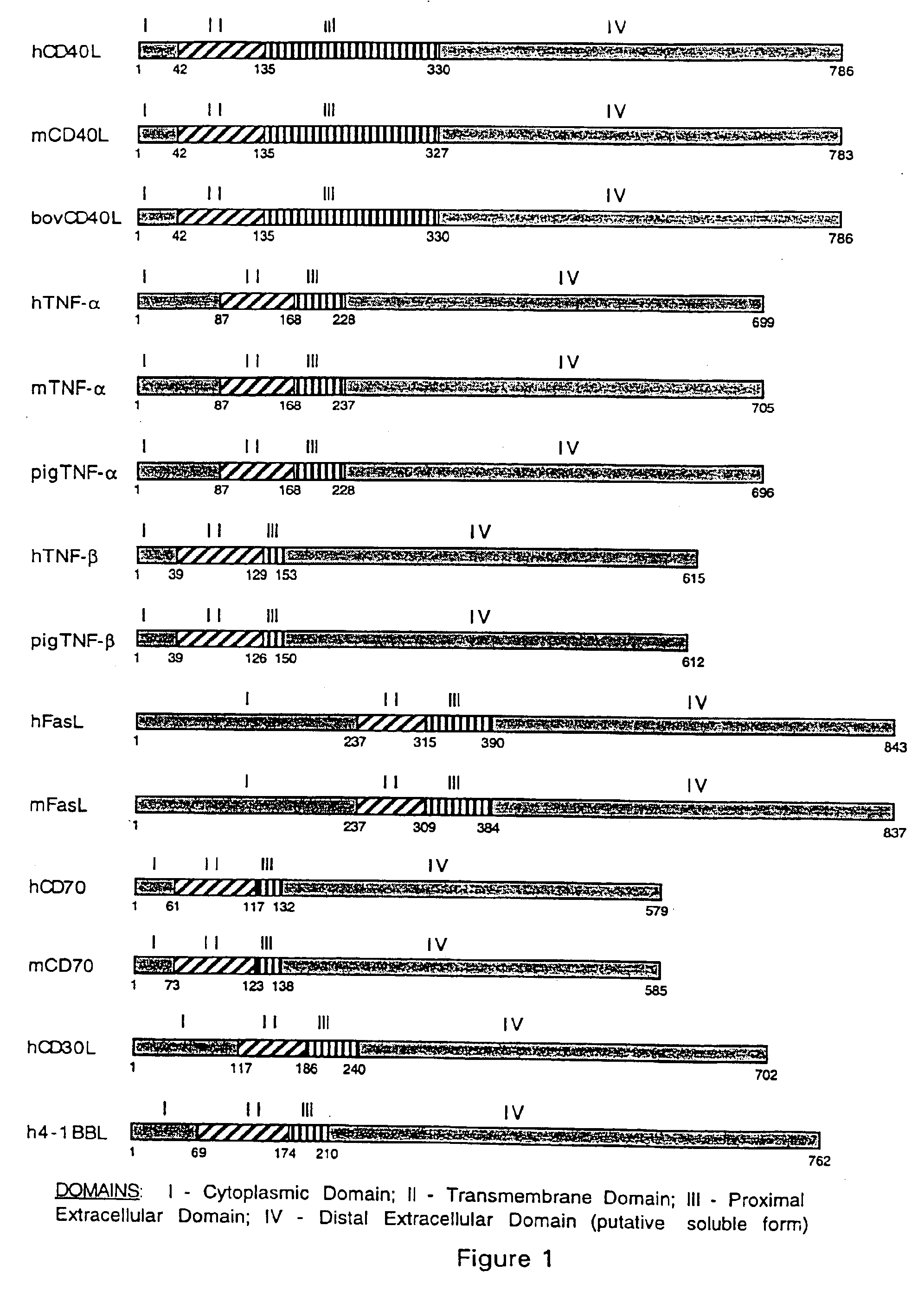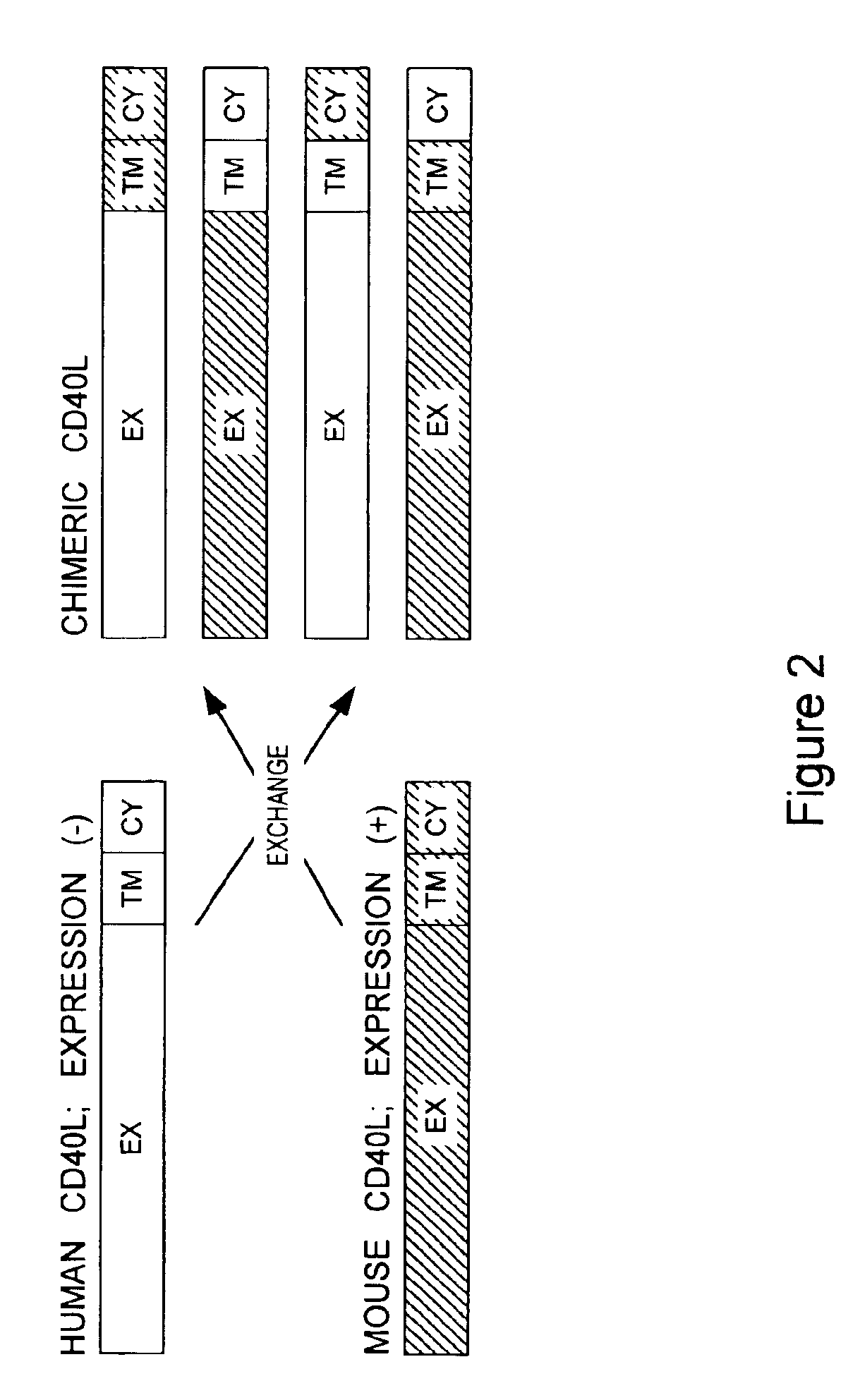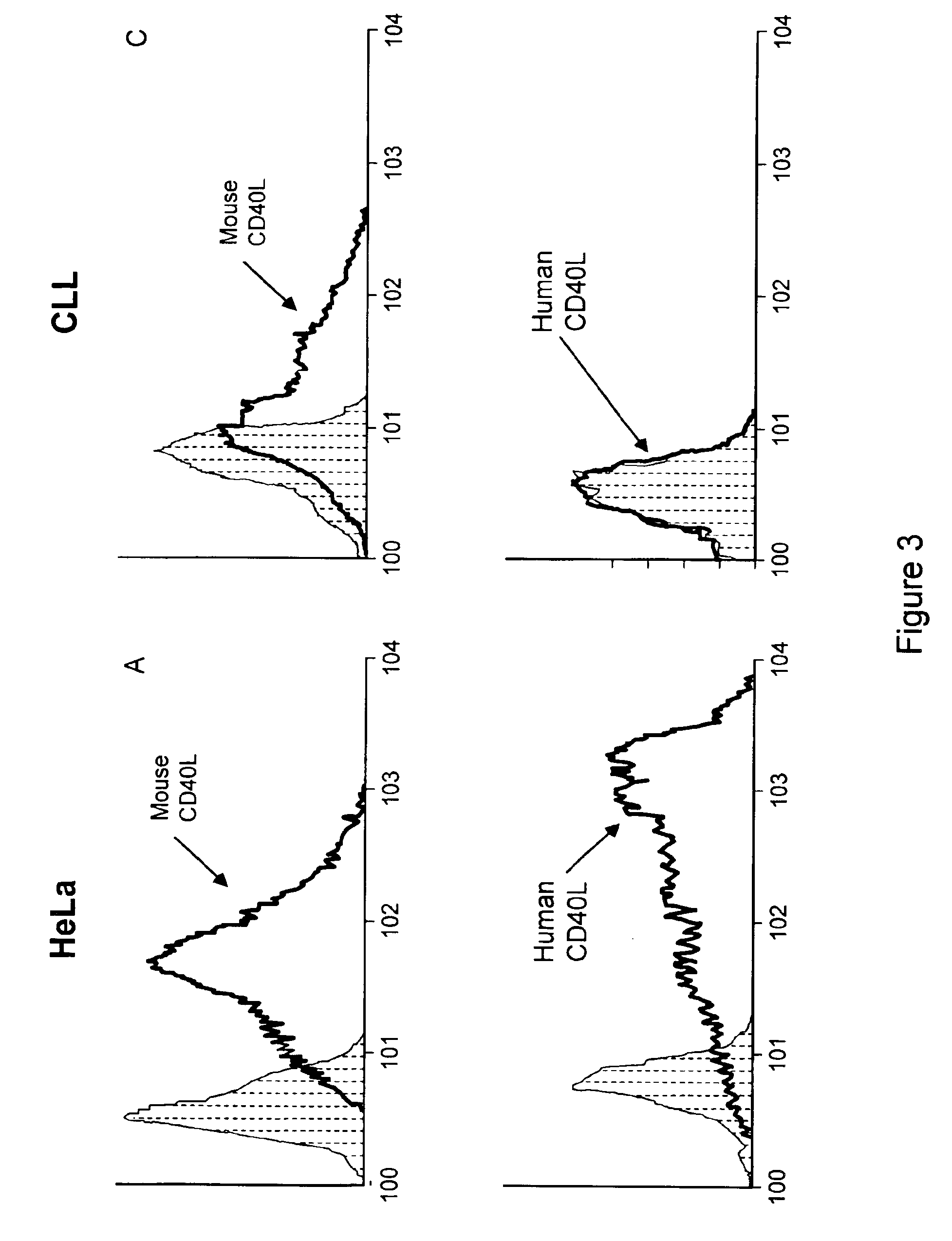Methods of expressing chimeric mouse and human CD40 ligand in human CD40+ cells
a chimeric mouse and human cd40 technology, applied in the field of expression vectors, can solve the problems of malignant or neoplastic b cells not being able to stimulate a vigorous allogeneic mixed lymphocyte reaction, malignant or neoplastic b cells are poor antigen presenters, etc., and achieve enhanced expression enhanced stability of fas ligand activity on cells within the join
- Summary
- Abstract
- Description
- Claims
- Application Information
AI Technical Summary
Benefits of technology
Problems solved by technology
Method used
Image
Examples
examples
1. Expression of Human and Mouse Accessory Molecule Ligand in Human CLL Cells
a. Construction of a Genetic Construct and Gene Therapy Vector Containing a Human and Mouse Accessory Molecule Ligand Gene
[0140]Either the human accessory molecule ligand gene (human CD40 ligand) or the murine accessory molecule ligand gene (murine CD40 ligand) was constructed utilizing the respective human and murine genes. Each of these genes was cloned in the following manner.
[0141]i. Murine CD40-L cloning
[0142]Total RNA was isolated using the RNA STAT-60 kit (Tel-Test “B” Inc., Friendswood, Tex.) from 1×107 B6 mouse splenocytes that were previously activated for 8 hours with immobilized CD3-specific mAb. cDNA was then synthesized with the Superscript cDNA synthesis kit (Gibco BRL, Grand Island, N.Y.) using oligo-dT primers. The murine CD40 ligand (mCD40-L) gene was then amplified from the cDNA by PCR using the following mCD40-L specific primers. 5′-GTTAAGCTTTTCAGTCAGCATGATAGAA (SEQ ID NO:26), 5′-GTTTCTA...
PUM
| Property | Measurement | Unit |
|---|---|---|
| Volume | aaaaa | aaaaa |
| Volume | aaaaa | aaaaa |
| Volume | aaaaa | aaaaa |
Abstract
Description
Claims
Application Information
 Login to View More
Login to View More - R&D
- Intellectual Property
- Life Sciences
- Materials
- Tech Scout
- Unparalleled Data Quality
- Higher Quality Content
- 60% Fewer Hallucinations
Browse by: Latest US Patents, China's latest patents, Technical Efficacy Thesaurus, Application Domain, Technology Topic, Popular Technical Reports.
© 2025 PatSnap. All rights reserved.Legal|Privacy policy|Modern Slavery Act Transparency Statement|Sitemap|About US| Contact US: help@patsnap.com



